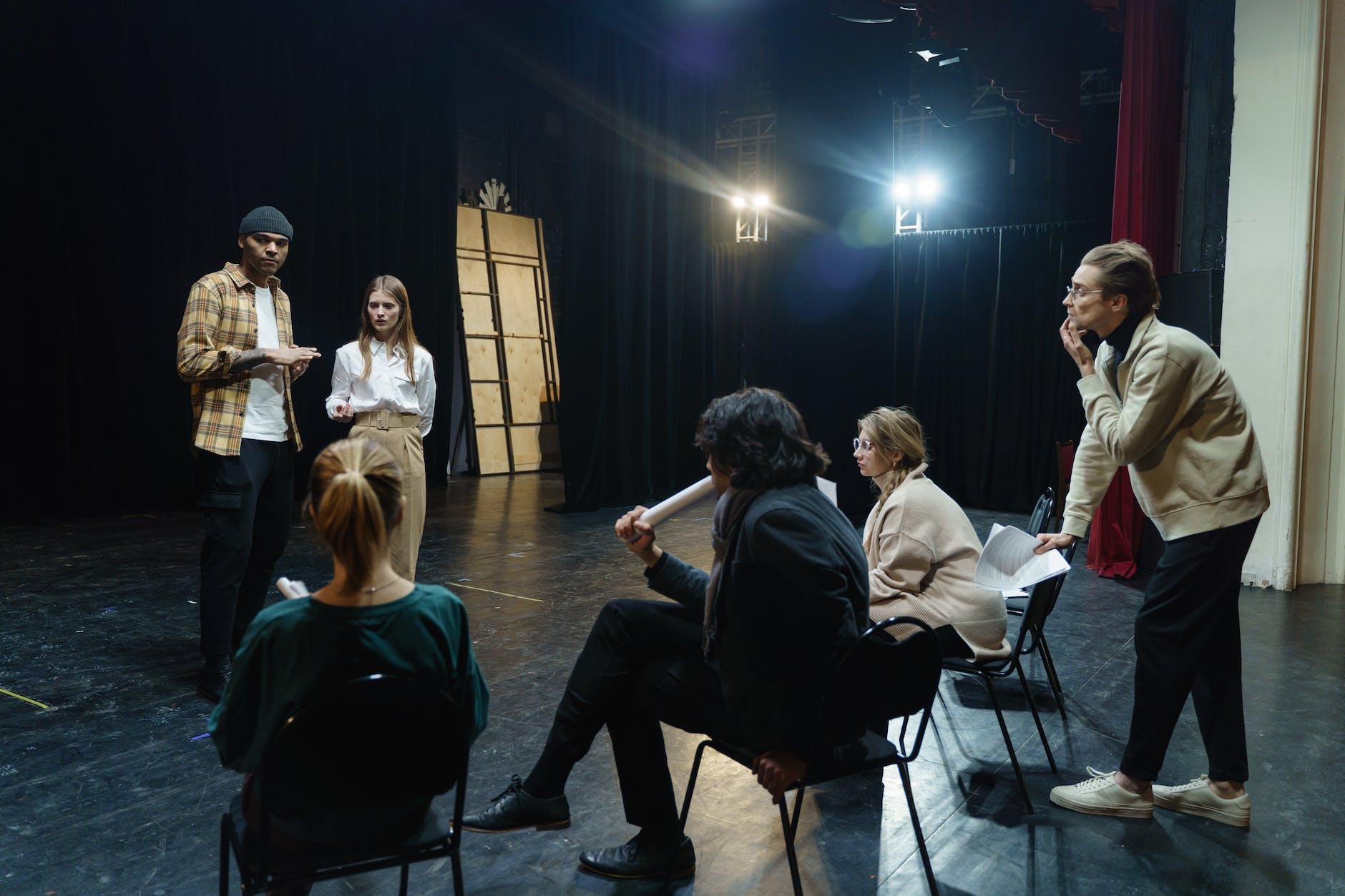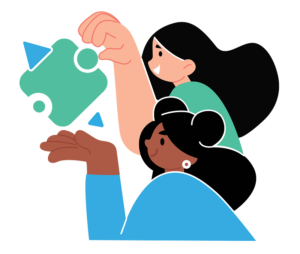Part 3 Leadership in your troupes, groups, and impro Partnerships – Leadership Qualities
Published by ShawnKinley on

Part 3 Leadership in your troupes, groups, and impro Partnerships - Leadership Qualities

Part ONE of our look at leadership series focussed on your vision and mission. Part TWO jumped into styles of leadership.
In part 3, we’ll wrap things up with a look at:
Developing your Leadership Skills
We know that there are distinct styles of leadership like the AUTHORTARIAN – (Steve Jobs), the TRANSFORMATIONAL – (Barrack Obama), and the SITUATIONAL styles (ANGELA MERKEL).
Each style has it’s own impact and value but to a greater or lesser extant there are common skills that impact all leaders and groups.
Some of these skills are:
- EMPATHY
- AWARENESS
- COMMUNICATION
- PROBLEM SOLVING SKILLS
- ADAPTATION
- REACTING
Here are a few exercises you may know that can work some of the muscles you need to be a better leader.
(I will touch the surface of these exercises here but a quick search online can help you find more detail about them. If that fails, send me a note and I’d be happy to drop by and run a little workshop on the skill that will help you become a better leader)
BEEP BEEP BEEP
Here’s a Keith Johnstone exercise. Simply described, it’s an exercise to help with speaking skills – more specifically, your connection to your audience/ clients/ company.
Stand in front of the class. They should be seated broadly in front of you from left to right and at different levels if there’s enough space.
Have the audience each raise one hand in the air. (it might be easier if they prop their elbow on the table or their lap)
As you speak to them (improvise a story or any topic) they will keep their hand up if you connect with them individually. If anyone feels like you haven’t been connecting to them, they slowly lower their hand towards the desk.
If you connect back with them (and they feel like you are establishing a connection) they will raise their hand back up.
If you fail to re-establish contact (to their satisfaction) and their hand reaches the desk, they will stary making BEEP BEEP BEEP sounds. Your job is to make everyone feel that you are connecting throughout the presentation. It’s not as easy as you think. And it gets more difficult as the group becomes more demanding of your attention.
SEE AND SAVE
An exercise I developed for directors to practice reading another person’s comfort and reacting immediately.
In daily life, we are bombarded with signals from the people around us. Some of those signals are distress signals – flashes of confused or disconnected expressions that could be a sign of a person’s uncertainty and stress..
Usually, we allow for some struggle before we step in. We don’t want to “interrupt” or seem controlling, but this exercise is not meant for the speaker, it is meant as practice for the observer to
- be aware of those situational cries for help and to
- act on the impulse to help rather than delay saving our partner because we don’t know what to do.
Here’s the process. A volunteer starts telling a story that has never been told.
The audience watches the speaker for small signs that the speaker doesn’t know what to say next or that they are disconnected from their own story.
Be careful that you watch for the uncertainty in their presentation and not honest breath or timing. A brief hesitation in the story could be reasonable pause or it could be a desperate inner search for the thread of the idea. You are looking for that second reason.
When the person flashes those little signals of uncertainty, “Uhhh”. “Ummmmmm” “looking down and hesitating.” etc, someone from the group will run up on stage and replace the speaker. That new person will continue the story.
Most people fail to act on their impulse when there’s danger for someone else. If you are coaching this exercise, watch the people in the audience who should be helping the speaker. Sometimes their hands or feet twitch like they are about to get up but then they don’t move. If you see that behaviour, Stop the exercise and ask if anyone saw a problem on stage. You are likely to have three or four people say they saw something but they didn’t get up.
Tell them to trust their bodies. Act on what they observe. Move forward to help their partner when their body sends them the signal. If they get it wrong we can talk about it later but they are more likely to fail their partners because they are protecting themselves from a possible mistake rather than helping their partner who is in trouble NOW.
YES LETS
Create inspiration in your partners or you will lose your team. In this Keith Johnstone exercise, a group on stage attempt to create and act out a story, one suggestion at a time.
Get a group of people who want to try the game.
One of them will make a suggestion they hope will inspire the others. LET’S GO TO THE BEACH!”
Those who like the suggestion immediately raise their arms in the air, yell “YES LETS!!!” and start walking to the beach….
Those who didn’t like the suggestion leave the stage without comment.
Someone makes another suggestion that moves the Beach story forward. and they repeat the procedure until there is no one left. Stay and continue the story if inspired. Leave if they are uninspired by suggestions.
This instant feedback game can be found in Keith Johnstone, “IMPRO FOR STORYTELLERS”. Pick up the book and explore the exercise deeper.
Good leaders know the stories that will pull clients and co-workers forward. They are also discerning and can recognize in themselves what carries and what kills inspiration.
SPITFIRE
In this classic game, one person tells a story. Their partner occasionally says random words that the storyteller must adapt to and include in the story they are telling.
Many people are thrown off their presentation when the world delivers something they had not planned for. Practice with spitfire to feel more uncomfortable with change.
If you don’t have a class or a partner to practice with, pull out a dictionary and as you tell your story flip to a random page, put your finger down, and use that word in your story.
CONCLUSION
We will all need to lead at some point. Whether we lead in business, schools, clubs, teams or even when called on in the subtle ways we are expected to lead at home, in relationships or personally to guide our own motivation.
Don’t shy from your role as a leader and try not to develop an overblown ego just because someone is willing to do what you suggest. The best leaders are often the ones that can guide the group while empowering the individuals to lead themselves.
Almost everything taught in improvisation has a place in training effective leaders. The four games above are just a splinter of what you can explore.
Keep exploring, adapting, evolving and moving forward.



0 Comments